For as long as I can remember, the German Shepherd community has been divided: working-line versus show-line, each side convinced the other has lost its way. The argument is old, predictable, and rarely productive: two camps, two ideals, two different dogs.
Max von Stephanitz, the breed’s founder, warned us plainly: “The breeding of shepherd dogs is the breeding of working dogs; and this must always be the aim, or we shall cease to produce shepherd dogs.” Yet somewhere along the way, utility and beauty began to drift apart, and we began to reward one without the other.
I’ve read the articles, seen the graphs, and listened to the debates. Most end in the same resigned conclusion: the split is irreversible, the lines are too far gone. But for the better part of two decades, I’ve been quietly proving otherwise—not with a one-off cross, but with a deliberate, six-generation plan. The dogs in my kennel are living proof that the divide is bridgeable, and that when bred with clarity, discipline, and respect for both heritage and standard, the German Shepherd can still be one dog.
The Trouble with “Convenience” Crosses
Most failed attempts to unite the lines have one thing in common: they were never built to succeed. Too often, these are pairings of convenience, made without a hard look at strengths and weaknesses, without a plan beyond the next litter. The result is offspring that satisfy neither purpose, inspire no continuity, and vanish into obscurity.
We forget that decades created the current divide. No single “band-aid” breeding can erase it. Like chasing quick riches, shortcuts in breeding almost always disappoint. Fix pigmentation with a single sable mating? Good luck with that.
The only path forward is through first principles thinking: breaking the problem into its smallest parts, understanding each, and solving them with discipline. In breeding, that means a clear standard, long-term goals, and the will to honor them over decades.
Six Generations in the Making
I am now six generations deep into the von Nummer-Eins motherline. From the start, my criteria have been fixed: character, health, and familial type, all in harmony with the breed standard. These are my crucible. Every decision is tested against them.
This is not theory. It is lived practice, proven in dogs like Fida, Raven, Tabasco, Atlas and Vader.

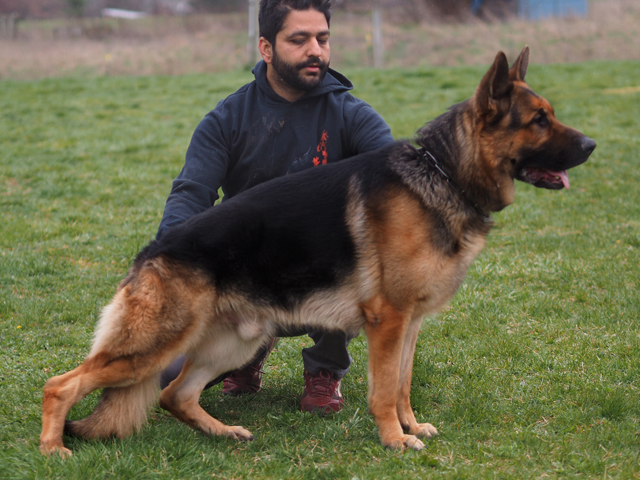

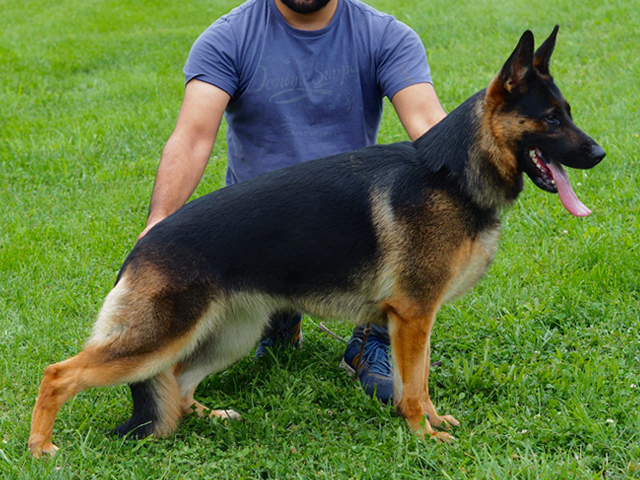
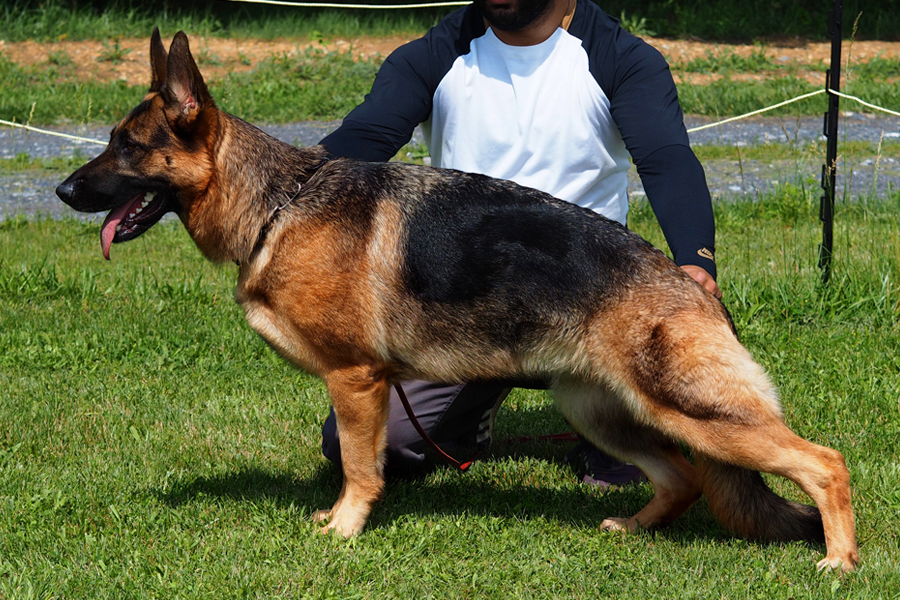
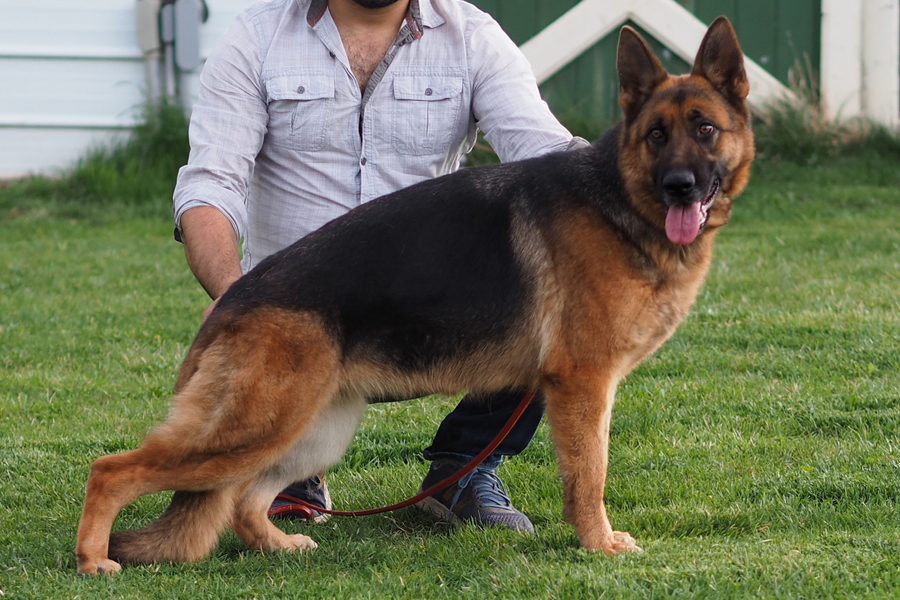
Fida – The Fifth-Generation Outcross





Fida is the point where intention meets proof. She is the second successful outcross within my established motherline, after Tabasco (Read more about the T-Litter here) sired by my working-line male, Lupin, and descending from the line of Vesper → Tigra → Nala. From Lupin she inherits color, coat, and drive; from her dam’s side, the type, expression, and grounded temperament built over generations.
She is athletic, people-focused, and thrives on work. Training her is a pleasure; she is intuitive, bright, and endlessly engaged.
I remember showing her to a respected judge with decades in the breed. He studied her and said, “She looks like the dogs from the seventies and eighties. The breed has evolved since then, there’s no need for experiments like her.” I smiled politely, but the remark only clarified the divide: to some, “evolution” is the pursuit of the latest silhouette; to me, it is producing dogs who could stand proudly in any decade, because they embody the balance of form and function that Stephanitz himself demanded.
Lupin – Strength, Temperament, and Purpose in Union
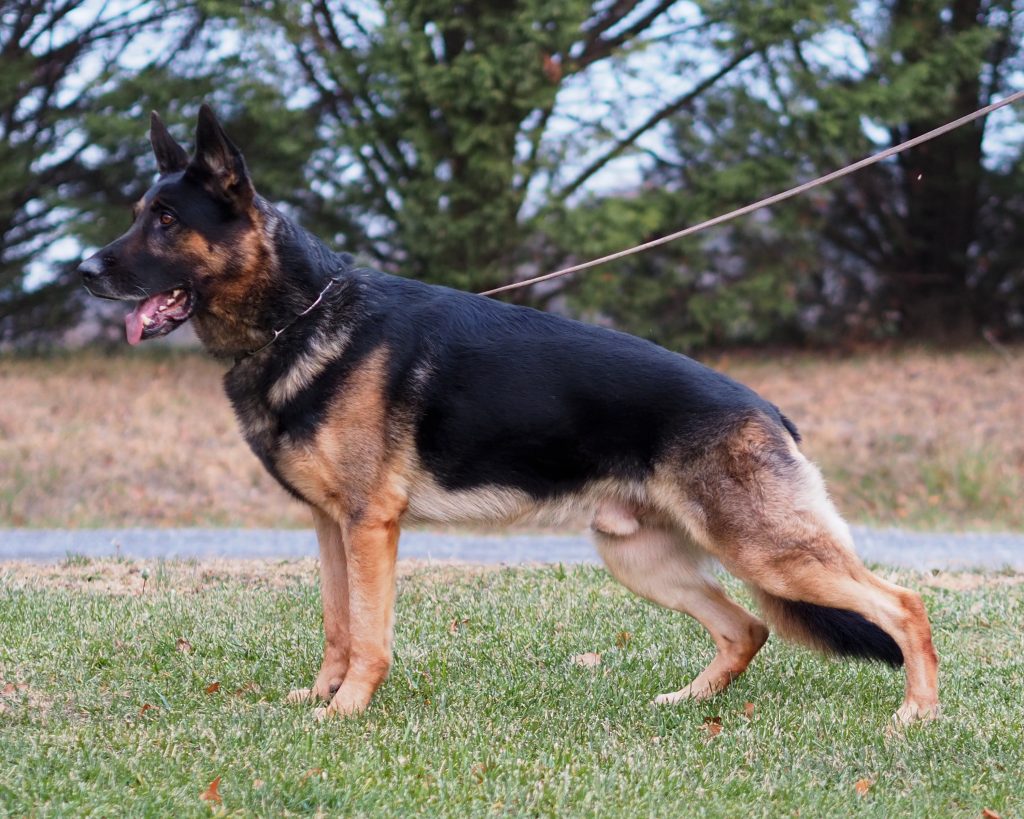
Lupin’s pedigree is a blueprint of working excellence. His sire, Henrik, comes from the storied H-litter vom Wölfsheim: three brothers who placed in the top five at both the BSP and WUSV Championships, an unmatched record. His dam’s side brings the blood of two WUSV World Champions: Iron von den Woelfen and Angsbacken’s Rosso.
But paper alone is meaningless without the dog himself. Lupin is balanced in temperament, strong in nerve, and has that essential “off switch” that allows him to be both high-performance worker and easy house companion. He consistently passes these traits on to his progeny.
A few years ago, at a trial, I said quietly to another seasoned judge, “If we were judging strictly by the standard, this is the type of dog that would be VA: sound of body, bursting with drive, and commanding in presence.” The judge gave a small, knowing nod. That was a quiet reaffirmation that Lupin was not just my vision in the pursuit of the ideal, he was the embodiment of the standard stripped of politics and trends.
Nala – Intelligence in Motion

Nala is the mind of the line distilled into one dog. At just ten weeks, she engineered her own route to a delayed meal—dragging a bag of shavings to a chair, climbing up, and jumping to the counter. This wasn’t instinct; it was active problem-solving.
Her ability to problem solve, almost child like, excellent engagement in obedience from the start, her structure precise, and her movement among the best I have seen. She remains the intellectual and structural anchor of her line, her influence visible in Fida, Gaga and beyond.
The Blend Realized
Fida carries her parents’ legacy in perfect proportion—her father’s pigmentation, color pattern and tenacity, her mother’s elegance and quicksilver mind. In her daughters, Venus and Valerie, I see the same union of mental depth and physical excellence taking root for the next generation.
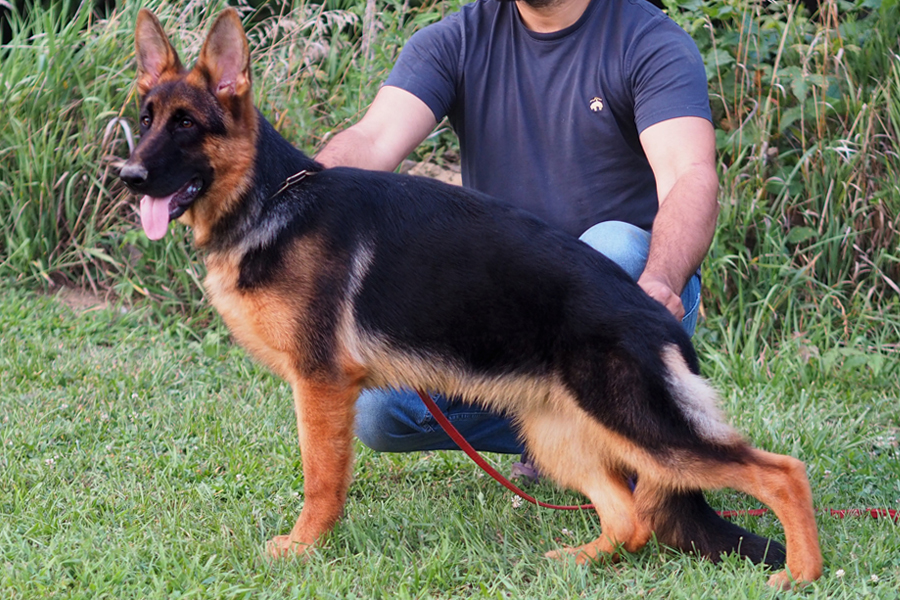
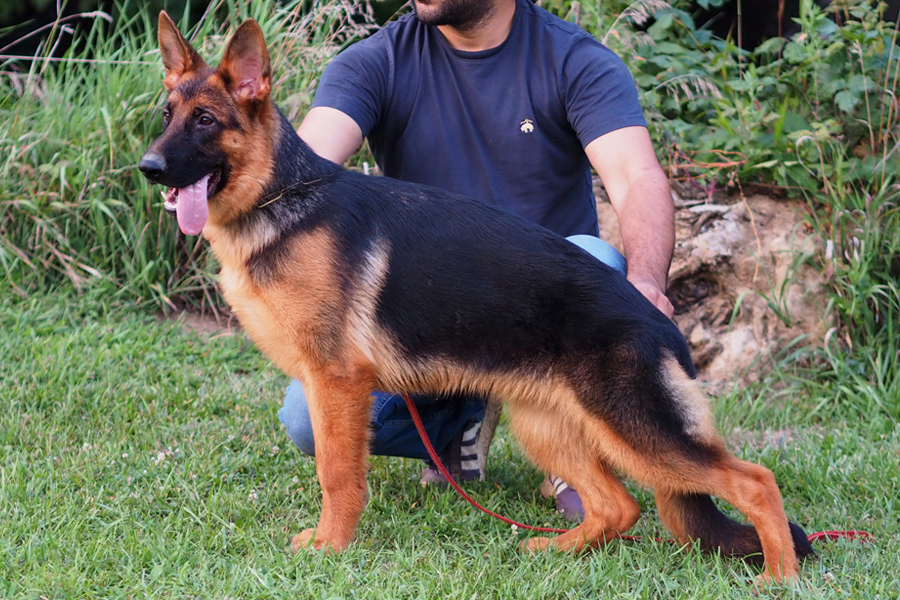
The two judges’ comments: one dismissing Fida as an outdated experiment, the other quietly affirming Lupin as the embodiment of the standard are the spectrum in which my program exists. On one side, the pull toward fashion and fleeting trends; on the other, the quiet recognition of enduring substance.
Six generations in, I know this much: the German Shepherd does not need to be a dog of divided purpose. When bred with intent, discipline, and fidelity to the spirit, not just the letter of the standard, the working-line and show-line can become one dog again: a dog of utility, beauty, and balance.
Max von Stephanitz’s warning is as relevant now as it was then: “Utility is the true criterion of beauty.” In my kennel, that aim is not a relic, it is written in the bodies, minds, and temperaments of every generation that bears the von Nummer-Eins name.

